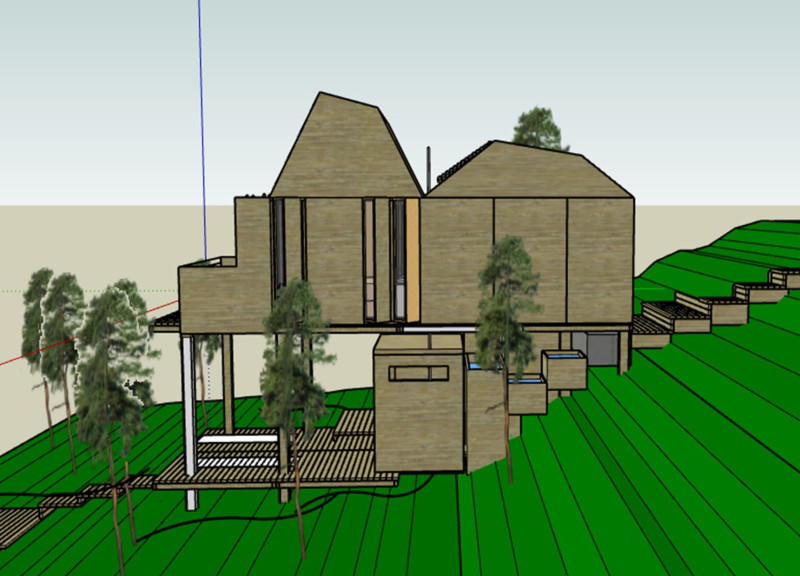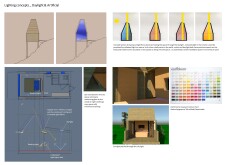5 key facts about this project
The design at Vale de Mos is located in a landscape that emphasizes a balance between nature and well-being. As a retreat, the aim is to encourage relaxation and self-reflection while also being mindful of the environment. The project focuses on water management, which plays a key role in supporting the site's natural ecosystem. Through strategic planning, the design enhances biodiversity and creates a space where visitors can connect with nature.
Water Management Strategy
A series of check dams have been placed along the contours of the land to manage water movement. These elements slow down the flow, allowing sediment to gather and nourish the soil. This approach helps promote plant growth and maintain a healthier ecosystem. By focusing on how water interacts with the landscape, the design addresses both environmental preservation and aesthetic appeal.
Cabin Placement and Interface with Nature
The cabins are strategically positioned to take advantage of water runoff, enhancing their interaction with the landscape. Marked in red on the site plan, these cabins surround themselves with drop-shaped patches of greenery. This not only allows for more privacy but also encourages a deeper connection with the natural environment. Occupants can enjoy moments of solitude while fully engaging with the beauty around them.
Sustainable Practices for Soil Enrichment
Soil health is a priority in the design, which incorporates composted organic waste and garden cuttings. These materials are used to build up the soil, encouraging the growth of existing trees while enabling new plant species to thrive. Composted human waste is also utilized once it has decomposed, creating a closed-loop system that minimizes waste and supports the ecology of the area.
Integrative Lighting Solutions
The retreat also considers lighting, using a mix of practical and aesthetic approaches. Cove lights and reading lamps help create a warm atmosphere, while skylights allow ample natural light into the interior. Mirrors are angled to reflect sunlight, enhancing the quality of light in the space. This thoughtful integration not only improves the environment but also contributes to the well-being of the occupants.
The design includes platforms for yoga and meditation, encouraging tranquility and personal wellness. These elements are woven carefully into the landscape, inviting visitors to engage fully with their surroundings. Each aspect of the design reinforces a commitment to ecological balance and personal reflection.

























































